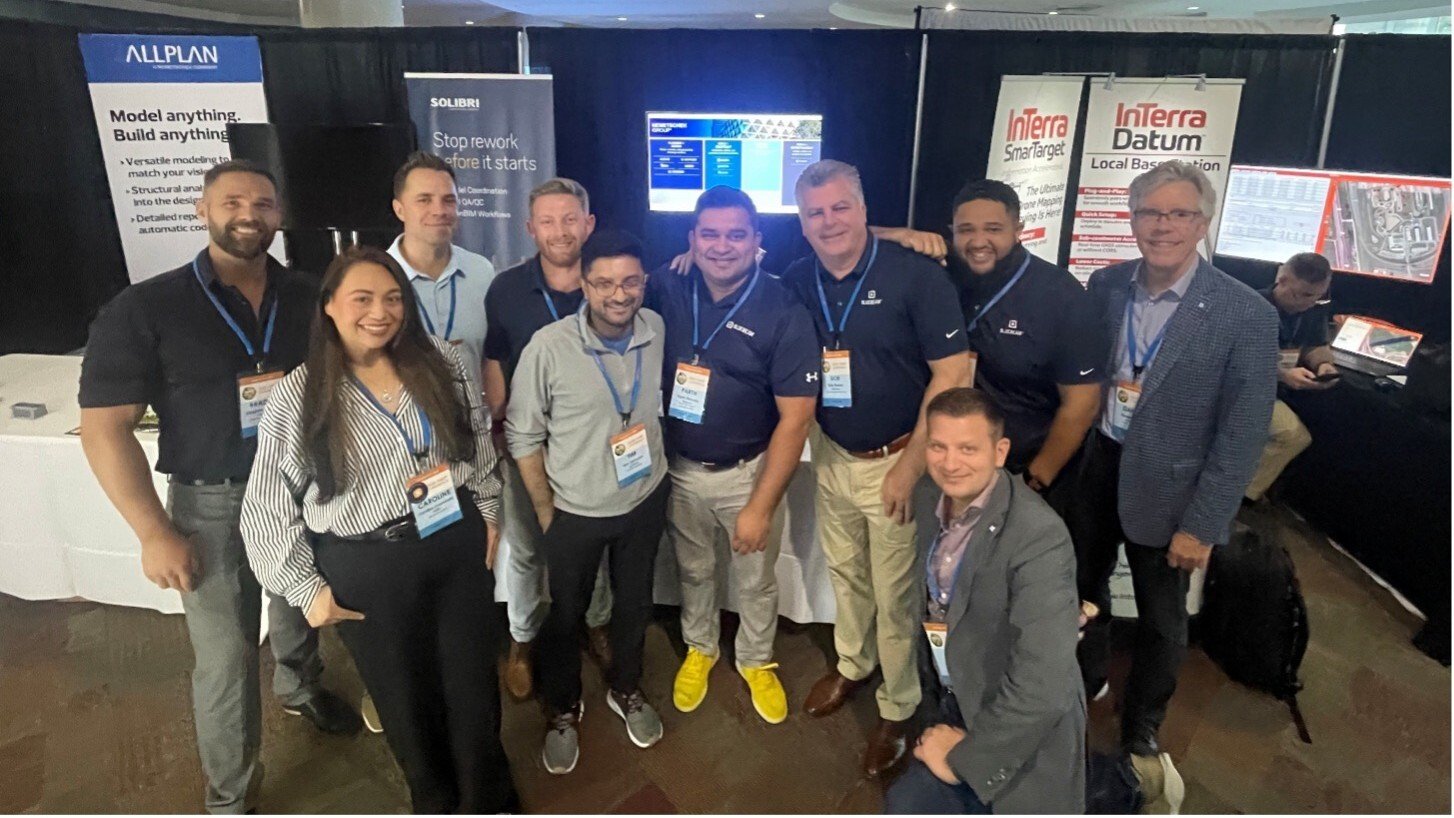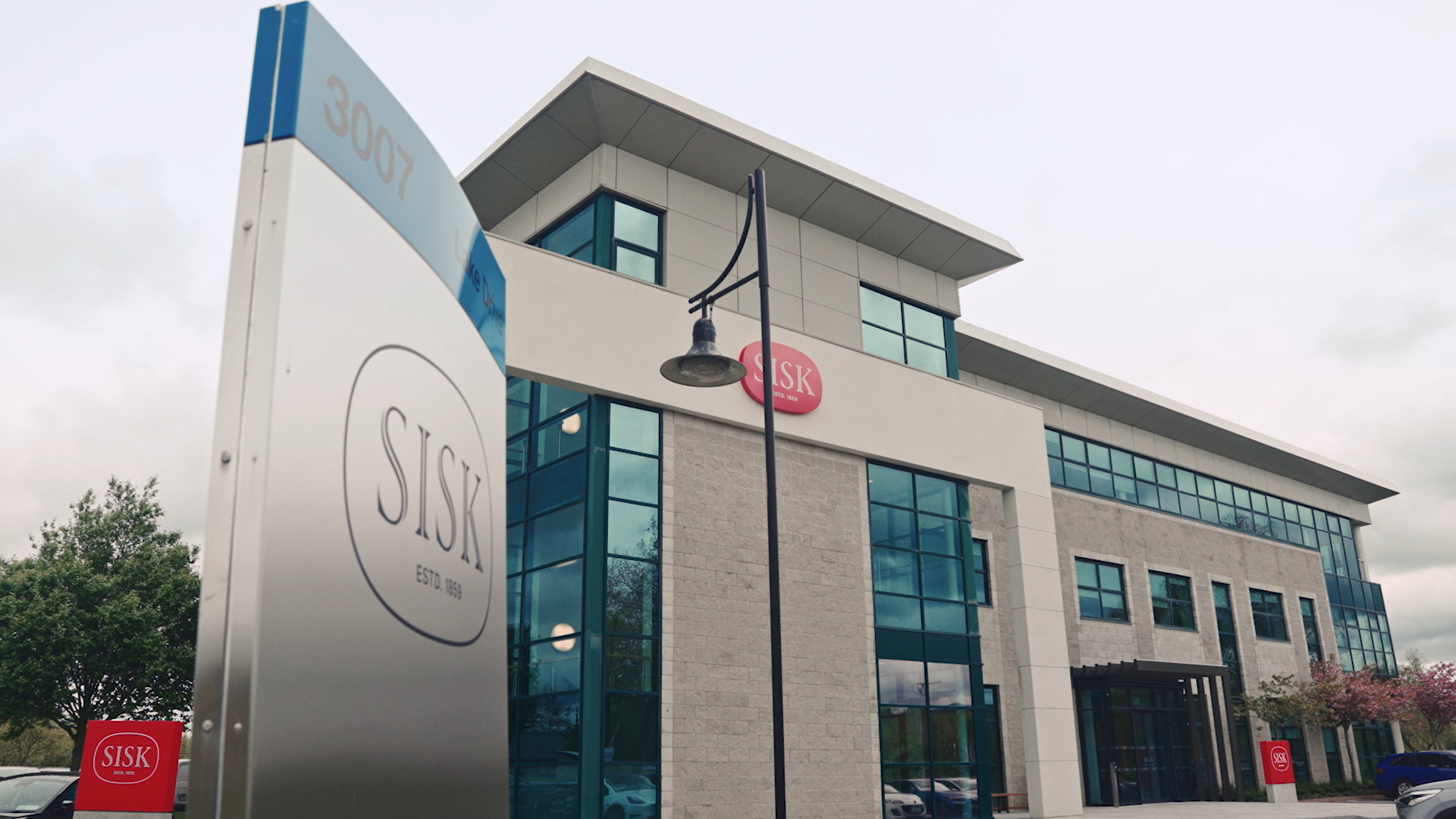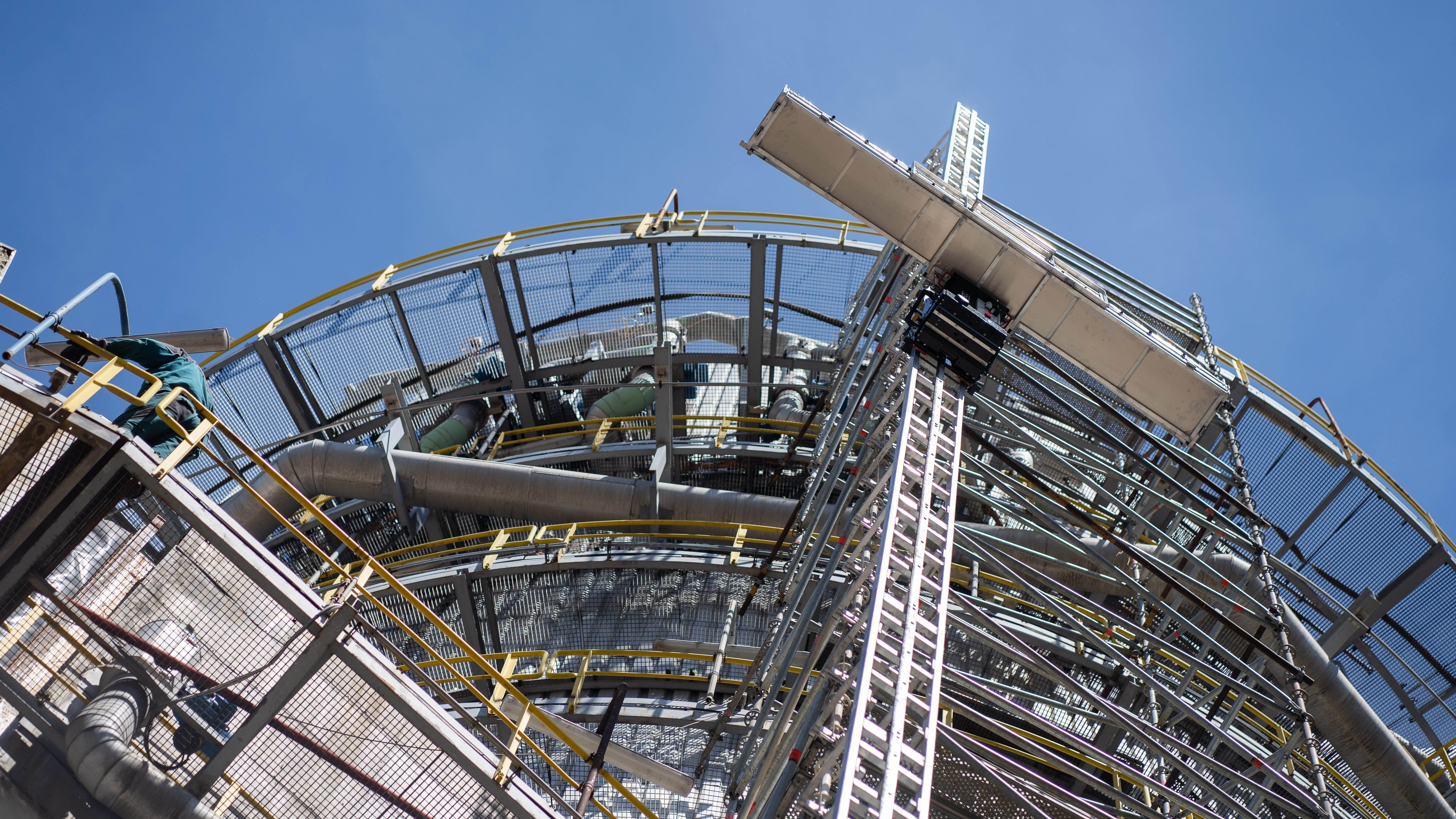Sustainable Design, Construction and Management – For a Green Construction Industry
The construction industry is one of the most resource-intensive sectors of the economy. Demand for housing is also continuously increasing. Accordingly, the construction industry is challenged to use raw materials and energy more efficiently.
Author
Nemetschek Group
This article belongs to the collection Sustainability
To the topic pageSustainable business and healthy ecosystems are the basis for healthy living. The construction industry is one of the most resource-intensive sectors of the economy. Demand for housing is also continuously increasing. Accordingly, the construction industry is challenged to use raw materials and energy more efficiently so that buildings can be designed, built, and operated more sustainably. These lighthouse projects show that sustainability and digitalization go hand-in-hand in the construction industry – from the initial design to the operation of the finished building.
Sustainable Planning
With the help of software, architects can plan more accurately and with greater foresight, avoiding demolition work and wasted materials. In addition, buildings are optimized in terms of their sustainability potential as early as the planning phase.
Sustainability in the Middle of the City
In 2018, Lacaton & Vassal, together with Quartus Résidentiel and Habitat & Humanisme, were awarded the contract for the conversion of the Marcel Lelong building as part of the "Saint-Vincent-de-Paul" spatial planning concept in the heart of Paris. The project is scheduled for completion in 2024.
The plans of the three architectural firms envisage retaining large parts of an existing hospital building from the 1950s and converting it into a modern residential building with commercial and communal areas. As part of the conversion measures, the existing building complex is to be extended by three to four stories. In total, the conversion and extensions will create 134 new apartments, including 66 condominiums, 35 rental apartments, and 33 social rental apartments, as well as commercial and community spaces in the center of Paris. Lacaton & Vassal used Vectorworks design software to implement their ideas and drawings for the plans to remodel the Marcel Lelongs building.
The apartments in the renovated and new sections will have spacious rooms and large glass areas to let in as much daylight as possible. The apartments in the newly built section will also have conservatories and balconies. Demolition work has been kept to a minimum, forming an environmentally friendly approach focusing on the economical use of resources and materials and maximum reuse of the existing building. With winter gardens and a double facade for all new apartments, the challenge of ensuring comfort while saving energy is addressed by making the most of the climatic conditions.
Landscape architect Cyrille Marlin has created a naturalistic garden around the building, providing a sustainable space for plants in the center of Paris. The Agora, the central square and heart of the building complex, brings together a service area, garden, greenhouse, and social spaces for residents. In addition, there is a café, a workspace, and a space for social interaction open to the entire neighborhood.
The work of Lacaton & Vassal is based on the idea that it is an architect's responsibility to promote human well-being and that this should be their top priority. This philosophy is evident through the architects' work, especially in the midst of the global COVID-19 pandemic, which has exacerbated the problem of affordable housing for many people. The approach of the two French architects is a decidedly positive vision: "To use and transform what's already there to make something better."
-Lacaton-%26-Vassal%2c-Ga%C3%ABtan-Redelsperger%2c-Cyrille-Marlin%2c-Quartus-Residentiel%2c-Le-Bureau-Jaune.jpg)
(c) Lacaton & Vassal, Gaëtan Redelsperger, Cyrille Marlin, Quartus Residentiel, Le Bureau Jaune
Sustainability for the Public
In Detmold (North Rhine-Westphalia), the open-air museum of the Landschaftsverband Westfalen-Lippe (Westphalia-Lippe Regional Association) is all about the change of time and culture. Where approximately 120 historic buildings bear witness to history, a sustainable new building is currently under construction – heralding the era of sustainable construction in the museum sector.
Once completed, the new entrance and exhibition building will combine architectural history and innovative ecological building culture. To this end, the client and the architects from ACMS Architekten (Wuppertal) are pursuing a consistently sustainable approach that will culminate in the building's certification according to the DGNB Platinum Standard (German Sustainable Building Council).
The ensemble's holistic sustainable concept includes, among other things, the use of renewable or recycled raw materials such as wood, clay, or straw, as well as an intelligent building structure and design.
The sustainability concept is optimized through the use of ecological building materials in such a way that the building technology and fabric, which often makes museums resource- and emission-intensive, is significantly minimized without restricting the necessary climatic conservation standard. Likewise, the buildings are air-conditioned via passive supply air temperature control through ducts in the ground and evaporative cooling (adiabatic cooling). In addition, the building's utilities supply is provided by a rainwater harvesting system and a 350 kWp photovoltaic system.
The planning of the new museum building is carried out with the support of software from ALLPLAN. The planning for the development of the applied innovative building techniques is accompanied by a research project. The aim of the research work is to develop architectural and building climate measures for the construction and operation of sustainable museums. The new museum building is not only a showcase project, but also a model project for future projects of this kind.
-ACMS-Architekten-GmbH.jpg)
(c) ACMS Architekten GmbH
Sustainability in Nature
Simian Mountain (or Simian Shan) is located in Chongqing's northern part of the Jiangjin District. The Simian Mountain Forest includes several areas accessible to tourists and the Yunshan City Complex. Consisting of two buildings, the Yunshan Town Complex is the entrance to a new tourist resort in the scenic valley of China's Simian Mountains. The rural location inspired Shanghai-based Yuangou Design Agency to incorporate the forms of the surrounding mountains and regional architecture into the design of the new facilities. Yuangou Design Agency is a team of more than 400 architects, planners, engineers, and consultants that covers the entire project management process.
Characteristic of the Chongqing region, the roofs are slightly curved, with large eaves and gables to drain the continuous rain typical of the climate. The new buildings incorporate this element in giant proportions. Two massive sloping buildings were designed to reflect the surrounding mountains and deliberately disproportionately reflect the local architecture. The final, simple, micro-curved roofs and openings resulted from several design stages where team members created them collaboratively, sharing data via BIMcloud while working from home offices due to the COVID-19 pandemic.
Instead of a traditional workflow of switching between different models and software programs, the team worked with Graphisoft’s Archicad to synchronize 2D and 3D views and quickly share new versions with the team. By simply switching between 2D and 3D views, the team could develop an intuitive expression of the original design intent and smoothly modify and adjust it from multiple locations.
-Yunshan-Town-Complex%2c-Chongqing%2c-China%2c-Yuangou-Architects%2c-www.yuangou.jpg)
(c) Yunshan Town Complex, Chongqing, China, Yuangou Architects, www.yuangou.design
Sustainable Construction
Digital solutions also ensure savings during the construction phase. For example, the use of materials in the prefabrication of concrete structures can be minimized and waste reduced. On the construction site itself, paper consumption can be reduced by up to 90% through the use of digital collaboration solutions. The calculation of the carbon footprint can also be done efficiently in the construction phase.
Tablets Instead of Paper
The City of Las Vegas processes nearly 20,000 building applications annually. With applications being reviewed by at least five different departments, the previous paper-based process was proving inefficient, and storing the multitude of physical building applications was also a challenge for the city government. With the onset of the COVID-19 pandemic and the subsequent predominance of home office work, the previous paper-based process was no longer feasible.
With the help of Nemetschek's Bluebeam Revu application, the City of Las Vegas’ Community Development Department transformed the previously paper-based "planning," "construction," and "permitting" work processes into a digital application environment and building permit approvals were moved to a digital approval process. In a further step, the Nemetschek application Bluebeam Studio was used to link several departments involved, as well as applicants and plan reviewers, so that simultaneous reviews were possible in real time. This allowed city staff to work efficiently yet securely from their home offices, especially during the COVID-19 pandemic. Thanks to Bluebeam's innovative features, exams could also be standardized. The efficiency gains achieved helped reduce processing times and ultimately resulted in more projects being approved in the city of Las Vegas.
Based on nearly 20,000 building plan reviews and approximately 8,000 building permits issued per year, the City of Las Vegas estimates that this will save approximately $0.6 million annually in printing costs and a large amount of paper and printer supplies. These savings benefit both the local construction industry and the environment.
-Universal-Health-Services.jpg)
(c) Universal Health Services
Sustainable Building Management
Around 80% of the costs of a building are incurred during the utilization phase. A large part of this expenditure is due to energy consumption. Digital tools help monitor and reduce this energy consumption – as well as enable optimal control of heating, ventilation, and lighting. They can also be used to plan and use existing office space efficiently by showing how much space is actually needed, saving resources.
Seeing Change as an Opportunity
The healthcare sector is facing a number of challenges worldwide in terms of operating real estate. On the one hand, the demand for new assisted living facilities and nursing homes is continuously increasing due to demographic changes. On the other hand, many governments are placing greater emphasis on implementing sustainability and reducing energy consumption when operating a care facility.
The care organization "Stichting Voor Regionale Zorgverlening" (SVRZ) in the Zeeland region of the Netherlands is also facing up to these challenges. It primarily cares for vulnerable elderly people who need short- or long-term care and support due to their physical condition or impairments caused by dementia, for example. With more than 57 care facilities spread over 23 centers in the Zeeland region, SVRZ faces major challenges in maintaining its existing properties. This is one of the reasons why this area is the responsibility of an independent department, which has been using the Spacewell Maintenance solution for multi-year maintenance planning since 2012.
In 2020, the Energy Transition Master Plan was adopted by SVRZ with the subtitle: "Full speed ahead to zero gas". SVRZ has a sustainable goal and ambition to operate its care properties completely gas free by 2030. If this ambitious goal could be realized, SVRZ would meet national climate goals for 2050 before 2030.
Since then, the organization has already installed more than 6,500 solar modules. In the process, the technical condition of the roofing was checked in advance using the multi-year maintenance plan. At several sites, where necessary, the roof covering was renewed before the solar panels were installed, which increased the insulation value to the level of current standards for new buildings.
SVRZ also applied the principle of natural replacement time to renovations: for example, conventional light bulbs were replaced with modern and energy saving LED lighting as standard as part of renovation activities, and existing gas boilers were replaced with electric heat pumps.
As a result, SVRZ achieved a CO2 reduction of no less than 28% in the 2018-2020 period and reduced fossil natural gas consumption by more than 400,000m³ per year. In the coming years, the implementation of the Energy Transition Master Plan will continue based on the sustainable multi-year maintenance plan.
-Groepswoning-ter-Schorre.jpg)
(c) Groepswoning ter Schorre
The Office of the Future
The science and technology company Merck has its corporate headquarters in Darmstadt, Germany, and employs more than 60,000 people in over 60 countries worldwide. In Germany alone, more than 12,000 employees work to find solutions to some of the greatest medical challenges of our time.
As is common in many companies, every employee in the company used to have a fixed assigned workstation. New ways of using workstations and space have been explored – but a strategic approach to hybrid working and the office of the future only recently received a significant boost due to the COVID-19 pandemic.
In order to make the company headquarters fit for the work of the future and to allow all employees to participate in a modern office concept, Merck relied on the implementation of workplace solutions from CREM SOLUTIONS for the redesign of the working environment. The maxim of the concept was to get away from fixed workplaces and towards "New Work" or "Activity Based Working". As part of the redesign process, the Workplace Solutions system enabled a meaningful analysis of space and workspace utilization and ensured a safe return of employees to the office, especially during the COVID-19 pandemic. Quantitative, data-based monitoring of occupied space is also possible. The main goal here is to proactively manage available space and be able to respond in real time to changes in the organization as well as user behavior.
The information collected with the Workplace system is extensively analyzed and used for future scenarios in order to drive the further digitalization of the company's buildings and offices and implement modern working methods. Efficient control can optimize both the use of space and energy consumption – for example, it is no longer necessary to heat all office areas across the board or provide permanent lighting. Based on sound planning, accumulated experience, and close collaboration between the project teams, the Workplace solutions and the integrated Internet of Things (IoT) solutions were designed in such a way that the desired needs of the Merck Group are easily and completely mapped in a smart building system. In the long term, the aim is to deploy the Workplace system across the board in suitable properties.
-Tobi-Bohn-Fotografie.jpg)
(c) Tobi Bohn Fotografie
A Circular Construction Industry
The project examples show that there is a shift in thinking in the construction industry: away from analog silos and toward digital collaboration. This rethinking is also driven by the need to plan, build, and operate more sustainably. With the help of digitalization, this cycle can be closed from initial planning to the end of the life cycle – for a more sustainable, future-oriented construction industry.





